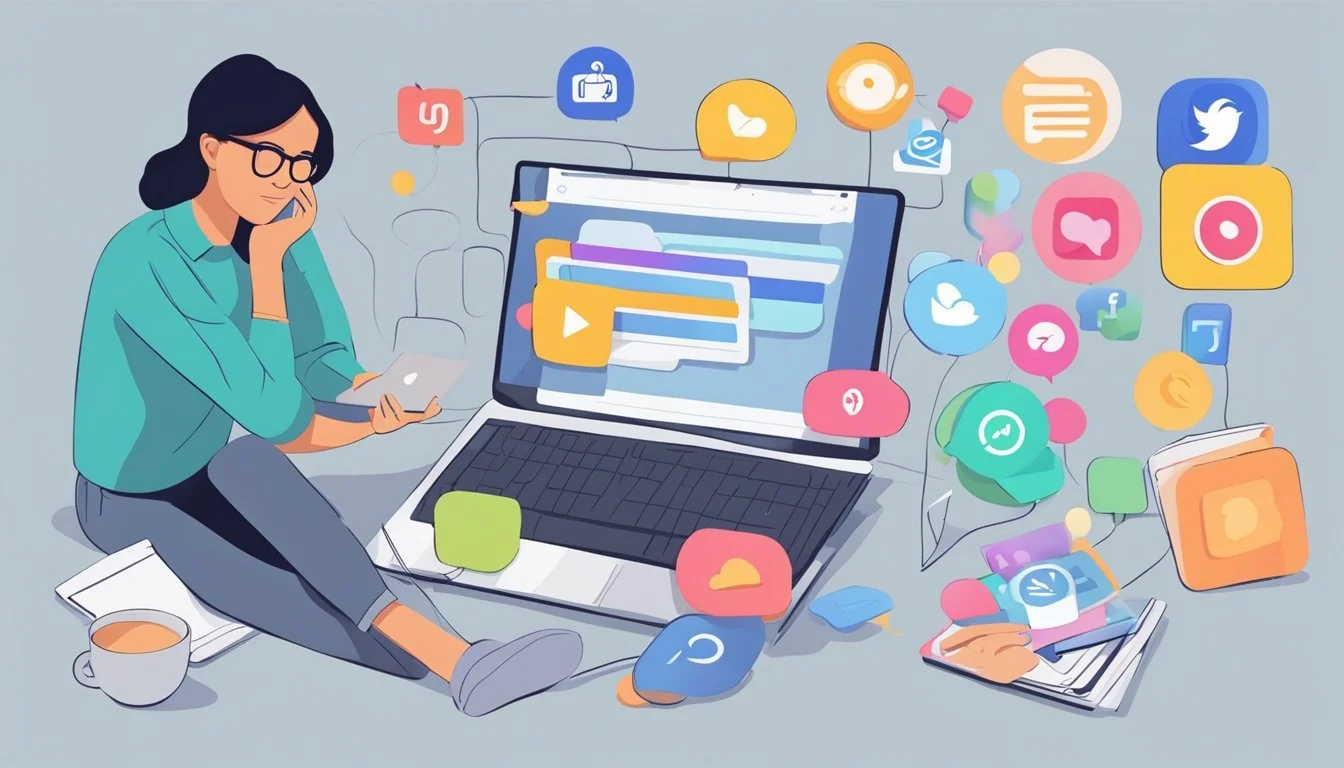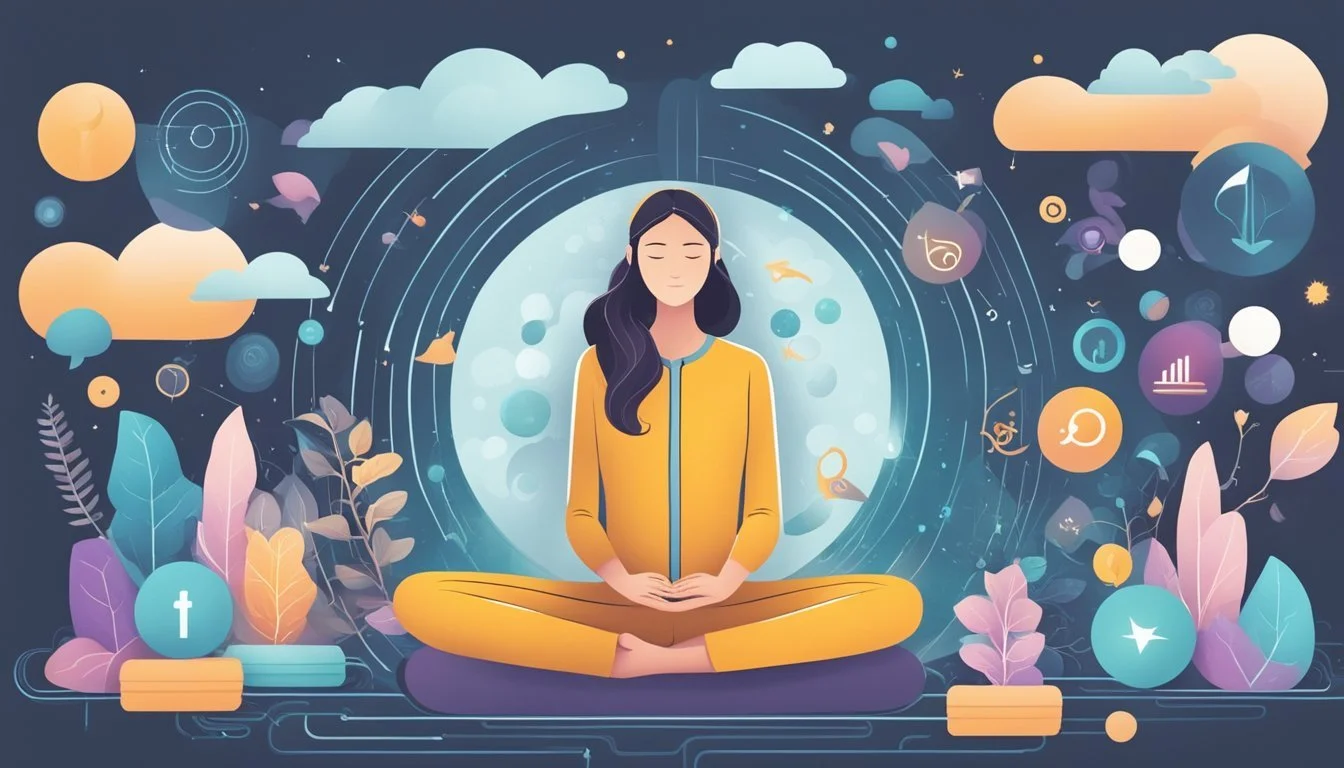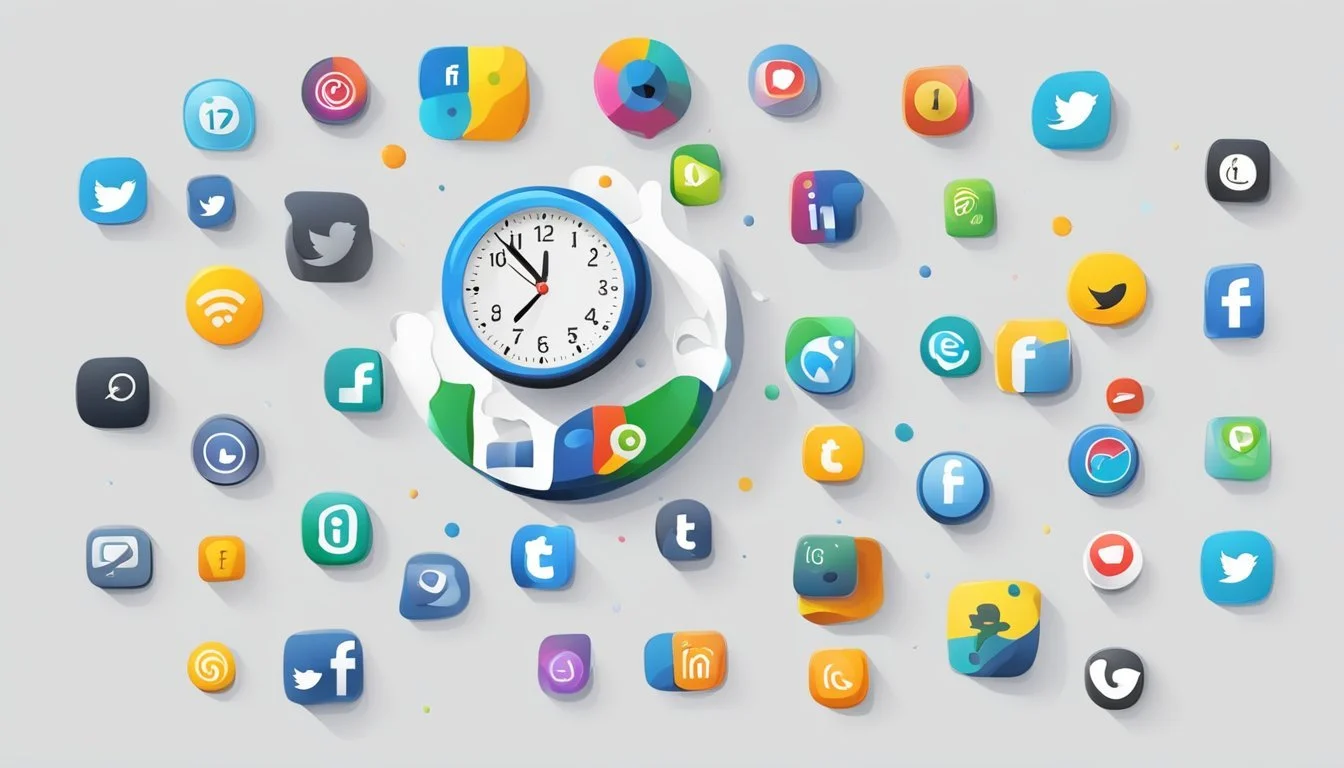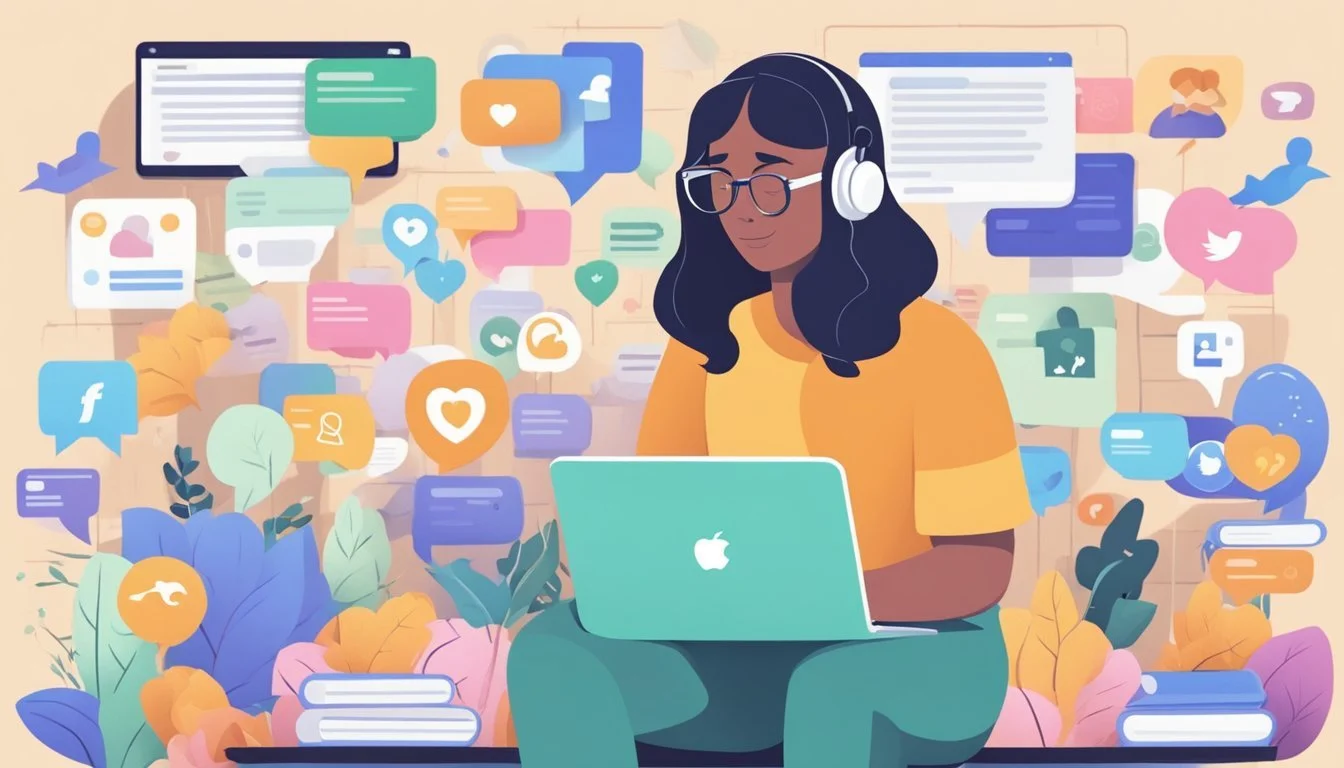8 Tips for Handling Social Media with BPD
Navigating Online Interactions Effectively
Social media has become an integral part of modern life, offering connection and community to millions worldwide. For individuals with Borderline Personality Disorder (BPD), these platforms can present unique challenges and opportunities. The immediate feedback and validation available through likes, comments, and shares can be particularly impactful for those managing BPD symptoms.
Understanding how to navigate social media effectively is crucial for individuals with BPD to protect their mental health and maintain stable relationships. This article provides practical tips for handling social media interactions while managing BPD symptoms. By implementing these strategies, individuals can harness the benefits of online communities while minimizing potential negative impacts on their emotional well-being.
1) Practice breathing exercises regularly
Breathing exercises can be invaluable for individuals with Borderline Personality Disorder (BPD) who use social media. These techniques help manage emotional responses and reduce stress when encountering triggering content or interactions online.
The 4-7-8 breathing method is particularly effective. It involves inhaling for 4 seconds, holding the breath for 7 seconds, and exhaling for 8 seconds. This pattern helps shift the body into a more relaxed state.
Another useful technique is the 4-4-4 breathing exercise. Users inhale for a count of four, hold for four, and exhale for four. This simple rhythm can be easily remembered and practiced during social media browsing.
Regular practice of these breathing exercises can strengthen emotional regulation skills over time. It's recommended to incorporate them into daily social media routines, especially before engaging with potentially challenging content.
By cultivating a habit of mindful breathing, individuals with BPD can create a buffer between their emotional reactions and online stimuli. This practice promotes a sense of calm and control in the often unpredictable world of social media.
2) Use grounding techniques during overwhelming moments
Social media can trigger intense emotions for individuals with BPD. When feeling overwhelmed, grounding techniques can help regain a sense of calm and stability.
Deep breathing exercises are an effective way to anchor oneself in the present moment. Taking slow, deliberate breaths can reduce anxiety and promote relaxation.
The 5-4-3-2-1 technique engages the senses to shift focus away from distressing thoughts. Identify five things you can see, four you can touch, three you can hear, two you can smell, and one you can taste.
Physical sensations can also be grounding. Hold an ice cube, snap a rubber band on your wrist, or squeeze a stress ball to redirect attention to tangible experiences.
Mindfulness practices like body scans or progressive muscle relaxation help reconnect with the physical self. These techniques promote awareness of bodily sensations and release tension.
Engaging in a simple task, such as counting backward from 100 by 7s, can occupy the mind and provide a mental break from overwhelming emotions.
Remember to practice these techniques regularly to build familiarity and effectiveness when needed during challenging moments on social media.
3) Create a curated list of positive, inspiring accounts
Social media can significantly impact mood and thought patterns for individuals with BPD. Cultivating a feed filled with uplifting content is crucial for maintaining emotional balance.
Begin by identifying accounts that consistently share positive messages, inspirational quotes, or helpful mental health tips. Look for profiles focused on self-care, mindfulness, and personal growth.
Consider following mental health professionals, motivational speakers, or organizations dedicated to BPD awareness and support. These accounts often provide valuable insights and coping strategies.
Seek out artists, photographers, or nature-focused accounts that share beautiful imagery. Visual content can have a calming effect and provide a welcome distraction during difficult moments.
Don't forget to include accounts that align with personal interests or hobbies. Seeing content related to passions can boost mood and provide a sense of connection.
Regularly review and refine the list of followed accounts. Remove any that consistently trigger negative emotions or unhelpful thought patterns. Prioritize those that foster a sense of hope and positivity.
4) Set time limits on social media usage
Establishing clear boundaries for social media use is crucial for individuals with BPD. Setting specific time limits can help manage impulses and reduce emotional overwhelm.
Many smartphones offer built-in tools to track and limit app usage. These features allow users to set daily time limits for social media applications.
Third-party apps and browser extensions can also assist in regulating social media consumption. These tools often provide detailed usage reports and customizable blocking options.
Designating certain hours of the day as "social media-free" zones can be beneficial. This might include meal times, work hours, or the hour before bedtime.
Using a timer while browsing social media platforms can increase awareness of time spent online. This simple technique helps users stay accountable to their set limits.
Gradually reducing time spent on social media can be more sustainable than abrupt changes. Starting with small reductions and slowly increasing them over time can lead to lasting habits.
5) Engage in offline hobbies to balance online activity
Balancing online and offline activities is crucial for individuals with BPD who use social media. Engaging in offline hobbies can provide a healthy distraction and reduce excessive social media use.
Pursuing creative activities like painting, writing, or playing a musical instrument can help channel emotions productively. These hobbies offer a sense of accomplishment and self-expression outside the digital realm.
Physical activities such as hiking, yoga, or team sports promote mental well-being and social connections in real life. They also provide opportunities to practice mindfulness and stay present in the moment.
Reading books, gardening, or cooking are relaxing hobbies that can replace time spent scrolling through social media feeds. These activities stimulate the mind and offer tangible results.
Volunteering or joining local community groups allows for meaningful interactions and a sense of purpose. It helps build real-world relationships and support networks beyond virtual connections.
By dedicating time to offline pursuits, individuals with BPD can reduce their reliance on social media for entertainment and emotional regulation. This balance promotes overall well-being and a more fulfilling lifestyle.
6) Follow mental health advocates for support
Social media platforms host numerous mental health advocates who share valuable insights and support for individuals with BPD. These advocates often provide relatable content, coping strategies, and words of encouragement.
Following mental health professionals, BPD specialists, and individuals with lived experience can create a supportive online environment. Their posts may offer validation, reduce feelings of isolation, and provide practical tips for managing symptoms.
Many advocates share personal stories of recovery, which can inspire hope and motivation. They may also post about the latest research and treatment options, helping followers stay informed about BPD management.
Engaging with these accounts through likes, comments, and shares can foster a sense of community. This interaction may help combat loneliness and create connections with others who understand the challenges of living with BPD.
It's important to choose advocates wisely, focusing on those who promote healthy coping mechanisms and evidence-based treatments. Avoiding accounts that glorify harmful behaviors or spread misinformation is crucial for maintaining a positive social media experience.
7) Prioritize in-person connections over digital ones
People with BPD can benefit from focusing on real-world relationships rather than online interactions. Face-to-face connections provide more emotional depth and nuance than digital communication.
In-person interactions allow for better interpretation of body language and tone of voice. This can help reduce misunderstandings that may arise from text-based conversations.
Spending time with friends and family in person can foster stronger bonds and support systems. These relationships are crucial for managing BPD symptoms and maintaining emotional stability.
Engaging in shared activities or simply having conversations without screens can improve social skills. It also reduces the risk of social media-induced anxiety or comparison.
While digital connections have their place, they should not replace real-world interactions. Balancing online and offline relationships is key for individuals with BPD.
Setting aside dedicated time for in-person meetings can help create a routine. This structure can be beneficial for those managing BPD symptoms.
8) Use social media scheduling tools for breaks
Social media scheduling tools can be valuable allies for individuals with BPD who want to manage their online presence more effectively. These tools allow users to plan and automate their posts in advance, creating opportunities for intentional breaks from social media.
By scheduling content ahead of time, people with BPD can reduce the pressure to constantly engage online. This approach helps maintain a consistent social media presence without the need for constant real-time interaction.
Popular scheduling tools like Buffer, Hootsuite, and Planly offer user-friendly interfaces that simplify the process of planning and organizing social media content. Users can set specific times for posts to go live, ensuring their accounts remain active even when they're taking a break.
These tools also provide analytics features, allowing users to track engagement and optimize their posting strategy. This data-driven approach can help individuals with BPD make more informed decisions about their social media use.
Implementing scheduled breaks using these tools can contribute to better emotional regulation and reduced stress associated with social media use. It allows for periods of disconnection while maintaining an online presence, striking a balance between engagement and self-care.
Understanding Social Media's Impact on BPD
Social media significantly influences individuals with Borderline Personality Disorder (BPD). It can amplify emotional instability and provide both positive and negative experiences.
The Role of Validation in BPD
People with BPD often seek external validation to manage their self-image and emotions. Social media platforms offer instant feedback through likes, comments, and shares. This immediate response can temporarily boost self-esteem and provide a sense of connection.
However, the constant pursuit of validation can become problematic. Users may post excessively or engage in attention-seeking behaviors. The absence of expected responses can trigger feelings of rejection or abandonment.
Social media interactions may lead to idealization and devaluation cycles. A person with BPD might quickly shift from admiring an online friend to feeling betrayed by them.
Why Social Media Can Be Overwhelming
The constant stream of information on social media can overwhelm individuals with BPD. Rapid emotional shifts and difficulty regulating emotions make processing this influx challenging.
Comparisons with others' curated online personas may intensify feelings of inadequacy or envy. The fear of missing out (FOMO) can increase anxiety and restlessness.
Impulsivity, a common BPD trait, may result in hasty posts or reactions. These actions can lead to regret or conflicts in relationships.
Cyberbullying or negative interactions can have a more severe impact on those with BPD, potentially triggering intense emotional responses or self-harm urges.
Setting boundaries and practicing mindful social media use can help manage these challenges.
Strategies for Healthy Social Media Use
Implementing effective strategies can help individuals with BPD navigate social media in a healthier way. These approaches focus on creating boundaries and fostering positive interactions to minimize potential triggers and enhance overall well-being.
Setting Boundaries
Set specific time limits for social media use each day. This helps prevent excessive scrolling and reduces exposure to potentially upsetting content. Consider using app timers or built-in phone features to enforce these limits.
Curate your feed carefully. Unfollow or mute accounts that consistently trigger negative emotions. Instead, prioritize content that uplifts and inspires you.
Create designated "social media-free" zones in your home, such as the bedroom or dining area. This promotes better sleep hygiene and more meaningful in-person interactions.
Take regular breaks from social platforms. A weekly "digital detox" day can provide valuable time for self-reflection and real-world connections.
Engaging in Positive Interactions
Focus on quality over quantity in online interactions. Engage thoughtfully with posts that resonate with you, rather than mindlessly scrolling or liking.
Participate in supportive online communities related to your interests or BPD support groups. These spaces can provide valuable connections and understanding.
Practice mindfulness when using social media. Before posting or commenting, pause and reflect on your emotional state and intentions.
Use social platforms to share positive experiences and gratitude. This can help shift focus towards uplifting aspects of life and foster a more optimistic outlook.








